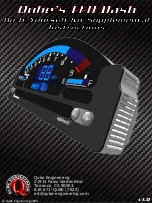
3-8
STEERING, SUSPENSION, WHEELS AND TIRES
TIRE LEAD
“Lead” is the deviation of the vehicle from a straight path on a level road even with no pressure on the steering
wheel.
Lead is usually caused by:
1) Incorrect alignment.
2) Uneven brake adjustment.
3) Tire construction.
The way in which a tire is built can produce lead in a vehicle. An example of this is placement of the belt. Off center
belts on tires can cause the tire to develop a side force while rolling straight down the road. If one side of the tire
has a little larger diameter than the other, the tire will tend to roll to one side. This will develop a side force which
can produce vehicle lead.
The procedure on previous flow chart (Lead Diagnosis) should be used to make sure that front alignment is not
mistaken for tire lead.
1) Part of the lead diagnosis procedure is different from the proper tire rotation pattern currently in the owner and
service manuals. If a medium to high mileage tire is moved to the other side of the vehicle, be sure to check
that ride roughness has not developed.
2) Rear tires will not cause lead.
VIBRATION DIAGNOSIS
Wheel unbalance causes most of the highway speed vibration problems. If a vibration remains after dynamic bal-
ancing, its possible causes are as follows.
1) Tire runout.
2) Wheel runout.
3) Tire stiffness variation.
Measuring tire and/or wheel free runout will uncover only part of the problem. All causes, known as loaded radial
runout, must be checked by using a Tire Problem Detector (TPD). If TPD is not available, alternative method of
substituting known good tire and wheel assemblies on the problem vehicle can be used, although it takes a longer
time.
TIRE OUT OF
ROUND
TIRE STIFFNESS
VARIATION
RIM BENT OR
OUT OF ROUND
SMOOTH ROAD
SUSPENSION MOVEMENT
(Loaded Runout)
Caused by
















































